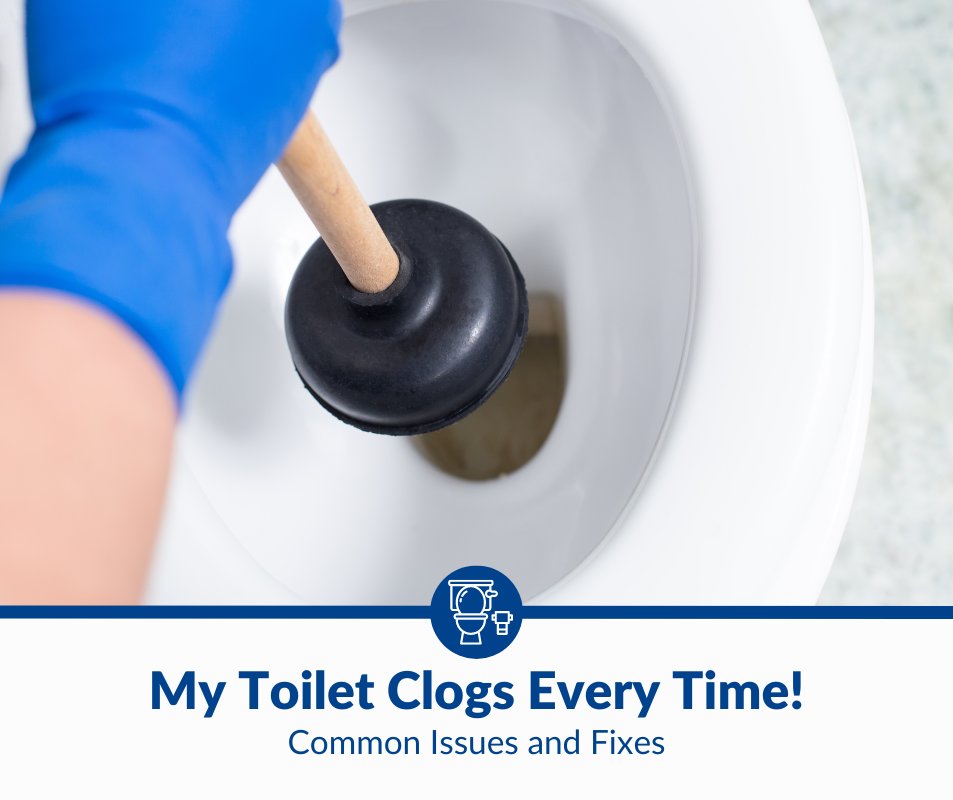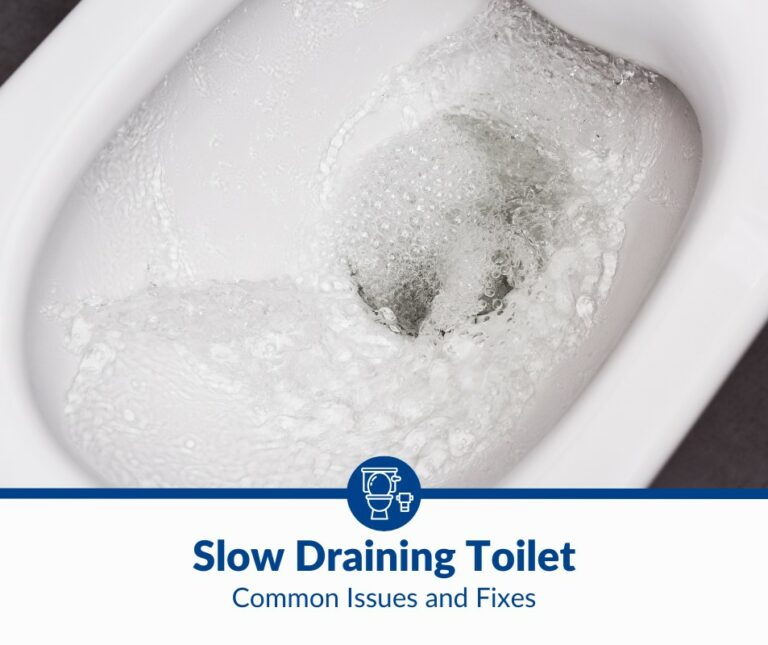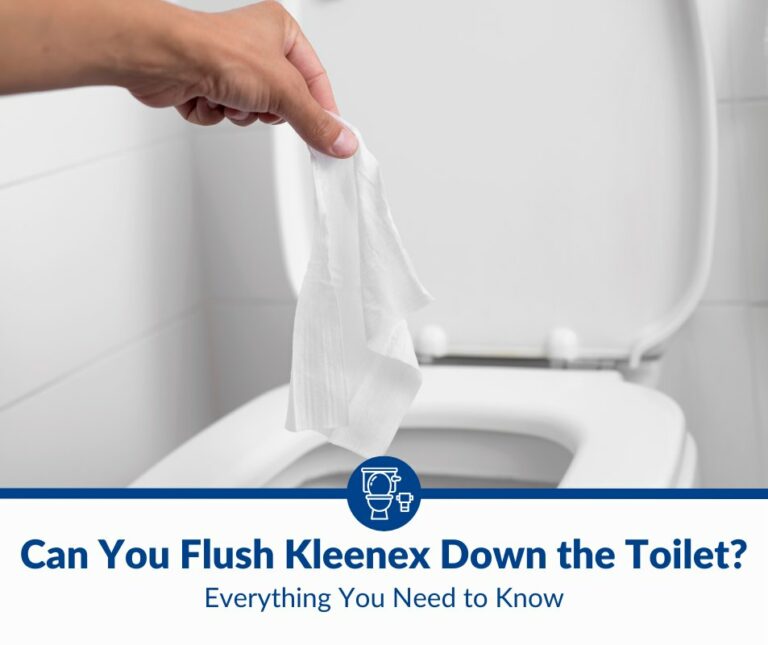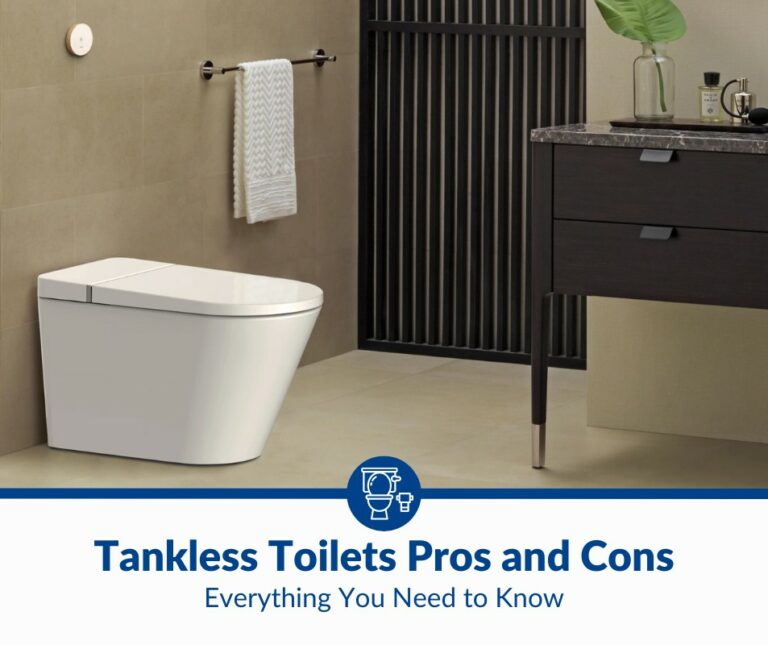My Toilet Clogs Every Time I Poop! Common Issues and Fixes
Clogged toilets can be disgusting, messy, and expensive, and nobody wants to deal with a clogged toilet, much less every time they use the bathroom. If your toilet clogs every time you poop, there’s something wrong with the plumbing. Identifying the problem will help you get your toilet back in working order in no time.
Your toilet clogs every time you poop because you’re using too much toilet paper, there’s not enough water in the toilet, or the plumbing is clogged. Broken plumbing can also clog the toilet. You can use a plumbing snake or liquid plumbing solution to clear a clog. Replace damaged plumbing, too.
In this article, I’ll cover all of the reasons your toilet clogs every time you poop. We’ll also suggest several solutions to help you repair your toilet.
1. Too Much Toilet Paper
Using too much toilet paper is one of the main ways you’ll clog your toilet every time you use it. Excessive amounts of toilet paper can wreak havoc on your toilet’s plumbing, even if the plumbing is otherwise in great condition. This includes leaving toilet paper in the toilet for too long since it gets waterlogged and makes it harder to flush.
You should be able to see the water below the toilet paper. If the whole bowl is full of toilet paper without any water around it, you know you’ve likely used too much. Fortunately, there are a couple of workarounds that won’t sacrifice your hygiene.
How To Fix
Follow these suggestions if you think you might be using too much toilet paper:
- Switch to a bidet attachment. The SAMODRA Non-Electric Bidet (available on Amazon.com) connects under the toilet seat. This attachment has a pressure knob and a self-cleaning mechanism. It also cleans the front and back, preventing you from having to use too much toilet paper.
- Use one-ply toilet paper. It might not be as comfortable, but it puts half of the amount of toilet paper into the plumbing. Never use so much toilet paper that it covers all of the water and starts to pyramid above the surface.
- Make sure the toilet paper is completely soaked and submerged before flushing. This process allows the toilet paper to break down.
2. Incorrect Type of Toilet Paper
Much like using too much toilet paper, using the wrong type of toilet paper can clog your plumbing every time you poop. For example, older plumbing typically can’t handle three-ply toilet paper because it’s too thick. The same applies to flushable wipes and other dense, thick types of toilet paper.
Note: If you’re clogging your motorhome’s toilet, consider using RV-grade toilet paper. It’s thinner and designed to break down much easier than regular toilet paper. It also prevents clogs and mounds, which is when too much toilet paper builds in a pyramid in the toilet tank or the toilet trap. This can also happen in regular toilets.
How To Fix
Switching to the right type of toilet paper can make a world of difference. Consider these suggestions when choosing the toilet paper you use to prevent clogs and other plumbing issues:
- Avoid hard toilet paper that clumps and doesn’t break apart easily.
- Stick to one-ply or two-ply toilet paper unless you have a brand-new, high-quality plumbing system.
- If you have copper plumbing, ensure the toilet paper is specifically designed for copper pipes.
One of the best ways to know if your toilet paper is good quality is to place a fresh sheet in a bowl of water or a sink, then stir it around with a spoon or a stick. If it breaks apart, it’s suitable for your toilet. You should opt for better toilet paper if it clumps and doesn’t dissolve or break down.
3. Toilet Trap Clogs
Mr. Plumber Indy claims your toilet trap can clog from hard water, too much chlorine in the water, the wrong type of toilet paper, and more. The toilet trap sits right below the bowl. P-style toilet traps have U-shaped plumbing that turns into a straight line. On the other hand, S-style toilet traps curve into an S shape. Both types can clog.
Most clogged toilets have toilet trap issues. This means the clog is likely above ground and not in the main plumbing line. They’re very common, so every home should have a toilet plunger. Toilet plungers let you create a vacuum that removes and shifts the debris out of the clogged toilet trap.
How To Fix
There are three easy ways to remove toilet trap clogs:
- Use a toilet plunger until the clog goes away. This process creates a seal that suctions all clogged toilet paper through the toilet trap. You should hear a whooshing sound followed by the toilet draining everything out of the bowl.
- Try a plumbing snake. The DrainX Drain Auger Pro (available on Amazon.com) is an excellent plumbing tool that removes clogs from various pipes around your home. This 25-foot (7.62 m) plumbing snake pushes the debris through the plumbing, removing the clog. It includes gloves and a storage bag.
- Add liquid plumbing chemicals. These solutions break down the debris in the toilet trap, sink, and many other plumbing fixtures around your home. Pour the solution into the toilet, let it sit for half an hour, then flush or plunge the toilet. Always wear gloves when adding these corrosive chemicals, and don’t use more than recommended on the label.
4. Sewer Line Clogs
The sewer line starts right after the aforementioned toilet trap. Unfortunately, sewer line clogs are much worse than toilet trap clogs because they’re harder to remove. They can be caused by the following issues:
- Clogs and excess debris coming from any toilet in the house
- Hair, dander, and other particles from showers and bathtubs
- Washing too many things down any sink, laundry machine, or dishwasher in the building
- Exterior clogs from leaves, sticks, mud, and mineral buildup
If the sewer line is clogged, you might also notice problems with any other plumbing system throughout your home.
How To Fix
Sewer line clogs typically require similar tactics as toilet trap clogs, but they require much more effort. Here’s what you can do:
- Use a plumbing snake or an auger that’s at least 25 feet (7.62 m) long. Push it through the toilet, then find your plumbing access point in front of your home. Push the auger through the line until it comes out of the toilet (or if you reach and remove the clog).
- Have someone flush a different toilet or run a sink, shower, or another water source while looking at the plumbing access point under the cover out front of your home. If the water trickles, there’s a plumbing clog. If it has a steady flow, the issue is isolated at the clogged toilet.
- If the plumbing access point is trickling or clogged, pour a plumbing solution through each of the water sources in your home (except the laundry machines and dishwashers). This will loosen all of the debris in the plumbing. It works very well with the previously mentioned auger trick.
5. Damaged Sewer Plumbing
If there’s no clog in your sewer system, but the toilet has flushing problems when you poop, the sewer plumbing might be damaged. Broken or worn plumbing will drastically reduce the water pressure, which causes the toilet to clog much easier.
Here’s what can damage the sewer plumbing:
- Tree roots pushing against the pipes
- Rust and corrosion damaging copper plumbing
- Bulging plumbing from buildup or not taking care of the sewer line
- Rocks and other debris poking into the sewer system
- Using harsh chemicals on weak plumbing fixtures
Damaged plumbing is inevitable, especially if you live in an older home. Repairing the plumbing can be the most effective way to stop clogging the toilet every time you poop.
How To Fix
Unfortunately, the only thing you can do about damaged sewer plumbing is replace the damaged pipe. However, you should also remove the source of the damage, i.e., the roots, rocks, and other items breaking the pipes.
Try these steps:
- Look for loose or wet soil, or hire a professional to locate the damaged pipe. Most burst sewer pipes send a lot of water into the surrounding soil, which eventually causes mushy sinkholes. It’s important to locate the pipe leak before it gets to this stage.
- Turn off the water supply. This ensures the plumbing isn’t wet when you glue it. Never glue wet PVC because it won’t form a solid bond with the glue or couplings.
- Use a plumbing saw to remove two inches (5.08 cm) on either side of the damaged pipe. Add a coupling to both exposed ends, then glue a new PVC pipe between the couplings. If you have copper plumbing, solder the new pipe and couplings in place of the damaged pipes.
6. Not Enough Water in the Toilet
According to Out of This World Home Services, your toilet will have trouble flushing poop or toilet paper if there’s not enough water in the bowl. This can happen for all sorts of reasons, including toilet tank leaks, plumbing leaks, or closed water inlets. It can also happen if you don’t have the water fill line at the correct height.
If there’s not enough water in the toilet bowl, it won’t be able to dissolve the toilet paper or guide the debris down the toilet trap and into the plumbing. It should be well above the tapered portion of the trap, preferably near the center of the bowl.
How To Fix
There are multiple ways to increase the water levels in your toilet. Try one or more of these recommendations:
- Open the water inlet valve all the way. This ensures that your toilet has enough water to fill the tank and the bowl.
- Make sure the flapper seals completely. If it doesn’t close, it might not sense a pressure difference between the bowl and the water inlet.
- Tighten the refill tube in the toilet tank. A loose or damaged refill tube won’t let enough water fill the toilet bowl, causing a host of flushing issues.
- If all else fails, pour a gallon or two of water into the bowl before flushing it. This might seem tedious, but it works in a pinch until you solve the clogging problem.
7. Reduced Flushing Pressure
When there’s not enough flushing pressure, everything will get stuck in the toilet trap or the sewer system. While most toilets flush without any issues, an off-center lever or float valve can drastically reduce the flushing pressure. This means your toilet won’t be able to break down solid materials, which is why it doesn’t clog when you don’t go poop.
Your toilet should take one to two seconds to get everything into the toilet trap. If it takes longer than three seconds to flush the debris below the tapered portion of the bowl, there’s not enough flushing pressure. You’ll end up with toilet clogs almost every time you go number two, which ends up causing much more expensive repairs.
How To Fix
Here’s how you can improve your toilet’s flushing pressure to prevent it from clogging every time you poop:
- Use a liquid plumbing chemical once annually to remove excess mineral buildup. The Green Gobbler Liquid Clog Remover (available on Amazon.com) can be used in almost any plumbing fixture in your home. Pour it into the toilet, wait for half an hour, and flush the toilet. It removes hair, toilet paper, oils, minerals, and more.
- Make sure the chain lets the flapper close but that it’s not too loose. There shouldn’t be too much slack, or the flapper won’t open all the way. When this happens, it doesn’t let enough water into the bowl, which drastically lowers the flushing power. You can use pliers to remove or add links. Wrap the extra links over the chain holder.
- Check for leaks in the plumbing or in the water inlet. All leaks will reduce your toilet’s flushing pressure. Use Teflon tape and silicone sealant on the water inlet or PVC glue to seal leaks in the PVC plumbing. Copper plumbing leaks can be sealed by soldering the copper plumbing when it’s dry.
8. Loose or Damaged Toilet Tank Parts
Toilet tanks have plenty of parts, all of which affect the toilet’s ability to flush. They also affect whether or not your toilet clogs when you poop or use a lot of toilet paper.
Here’s a detailed list of toilet tank parts that need to be inspected or adjusted:
- Float
- Chain
- Flapper
- Handle
- Refill tube
- O-rings and gaskets
When these parts are loose or damaged, your toilet won’t be able to produce enough flushing pressure, maintain adequate water levels, or remove all of the debris from the toilet in the right amount of time.
How To Fix
Keep these tips in mind when fixing the toilet tank’s parts:
- The float should be at the fill line.
- The chain should be snug but not too tight when it’s closed.
- Your toilet’s flapper should be flush with the tank’s inlet when it’s closed.
- The handle should be horizontal to promote flushing pressure.
- The refill tube needs to be sealed and free of debris.
- Each O-ring and gasket throughout the toilet tank should be lubricated every few years (or replaced if there are cracks).
The toilet tank houses the vast majority of moving parts on a toilet. Therefore, most of the repairs will likely take place in, on, or around the tank.
9. Using Non-Flushable Materials
Never flush anything that shouldn’t go into the toilet. If the item is listed as non-flushable or doesn’t say anything about putting it into a toilet, there’s a good chance that it will clog the toilet. Simpson Plumbing Services explains that the vast majority of clogs come from flushing things that simply shouldn’t go into a toilet.
Keep in mind that some items are labeled as flushable, even if they’re not suitable for older toilets. For example, some flushable wipes shouldn’t be flushed down old plumbing because it can’t handle the materials. These materials can also get caught in the sewer lines, worsening the plumbing throughout the house.
How To Fix
So, how should you know if something is flushable? Keep these things in mind:
- If it’s not toilet paper, don’t flush it down the toilet.
- Check the label to know how it works with older plumbing fixtures.
- Anything that doesn’t break down in warm water (including dense toilet paper) shouldn’t be flushed.
- Avoid flushing baby wipes, hair, feminine hygiene products, or anything with oil or wax.
If all else fails, consider switching to single-ply toilet paper until you can replace your toilet or its plumbing. Single-ply toilet paper breaks down much quicker, which prevents clogs.
Final Thoughts
While your toilet’s plumbing and the materials you flush play major roles in how well your toilet flushes, your diet is also quite influential. If you try all of the suggestions mentioned above to no avail, consider adjusting your diet to include more fiber. Fiber paired with adequate vitamins and minerals can prevent your toilet from having flushing issues.







